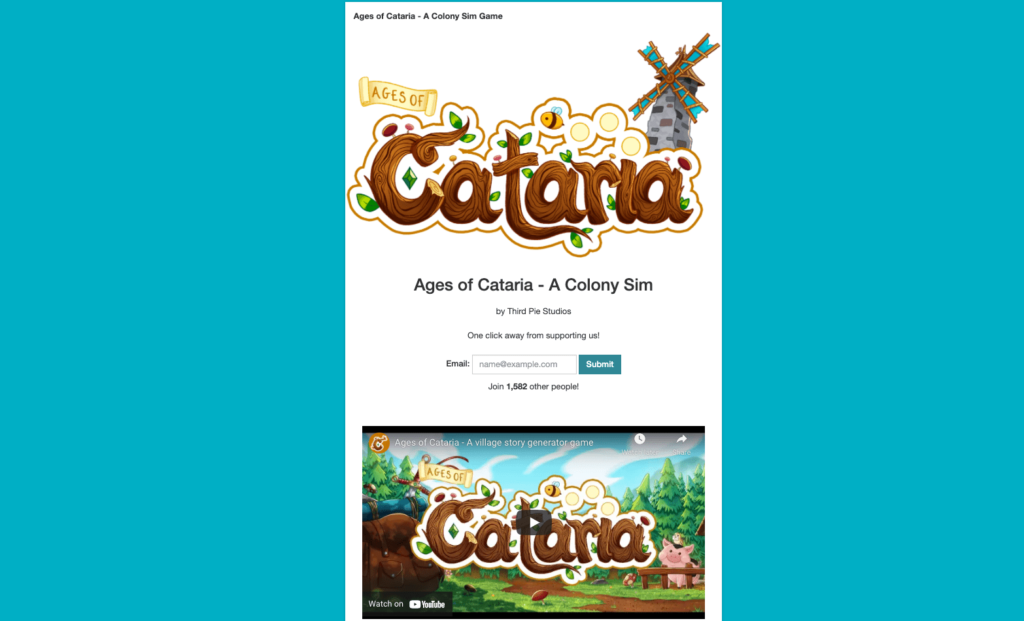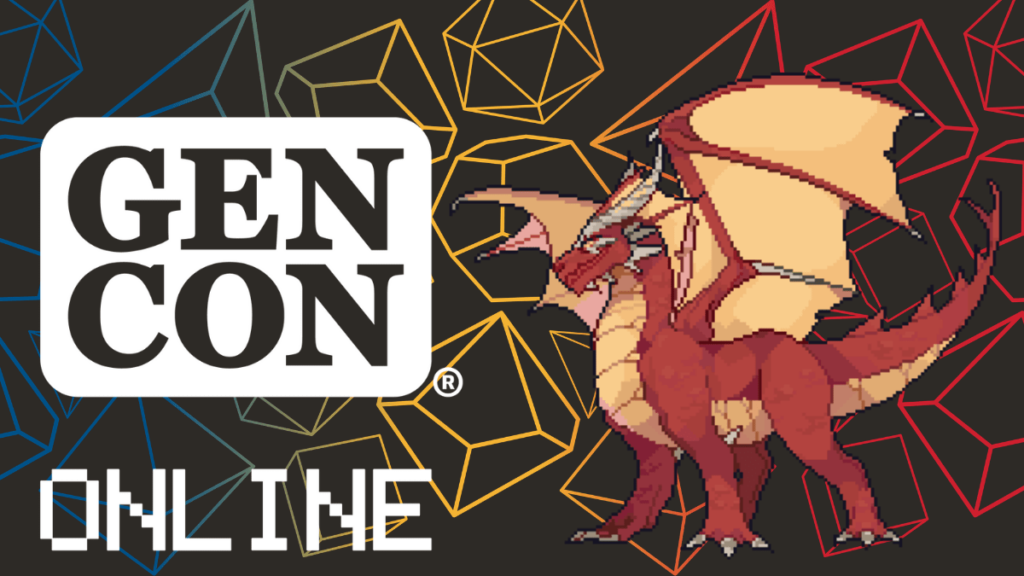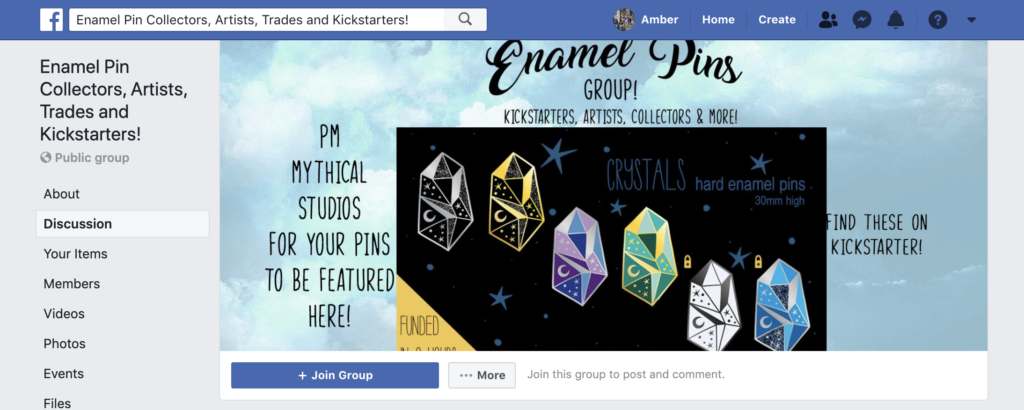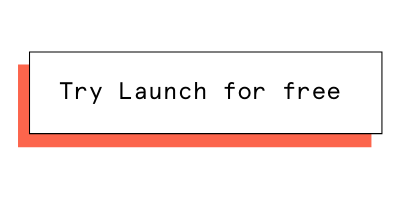[ad_1]
Your crowdfunding platform won’t serve up backers to you — you have to find them. So, before you launch your campaign, you need to build your email list. You have the power to get your project funded by growing a community of email subscribers and getting them excited to pledge to your campaign.
Collecting email addresses can be a daunting task when you’re just starting out. However, there are so many different ways to get the ball rolling. Try these 10 strategies to get started.
Before you get started, build a landing page
A landing page is a standalone web page used to achieve a specific marketing goal (whereas your website is more of a hub for your brand). This page is the foundation of your online list-building efforts. You will be directing people to it as you prepare for your campaign. You can create a landing page using BackerKit Launch — an email marketing and analytics tool designed specifically for crowdfunders. Simply sign up for Launch before your campaign begins to start collecting emails through your landing page.
The landing page for your project should be short and sweet. It should feature:
- A headline. This could be the name of your Indiegogo or Kickstarter project.
- Supporting copy. A brief description of your project concept or brand works well. If you have a launch date, include that too.
- A call to action (CTA). This is what you want visitors to do. In this case, the CTA will probably be something like “sign up for our email list to get updates on our project.”
- An email opt-in. This is the form where people submit their email addresses and agree to receive marketing emails from you.
You can spruce up the design with your logo or campaign image, but keep the design uncluttered and the text minimal. You don’t want there to be anything on the page to distract visitors from subscribing to your list.

A landing page is very important for your campaign’s success. This landing page for Ages of Cataria gets straight to the point, encouraging sign-ups in a single sentence.
1. Reach out to friends and family
The first people you should be reaching out to are your friends, family, and colleagues. They’re likely to be the easiest to sell on your crowdfunding idea because they’re actually invested in your success. Also, when you’re starting from scratch, having a few people on your list right away can give you a little bit of an emotional boost and be motivating. Send out an email with your landing page URL to the people in your immediate network, asking them to sign up and spread the word about your project.
2. Add a link in your social media bio and email signature
When you’re a Kickstarter or Indiegogo creator, any time you communicate with new people is an opportunity to build your email list. So, once you have your landing page up and running, put it everywhere potential subscribers will see it. Start by adding the link to your social media bios and your email signature.
On Twitter, LinkedIn, and Facebook, you can go one step further and pin a post to the top of your profile that directs people to your landing page. Once you have your link on display, keep engaging with your audience and building your community on these platforms. Post regularly, sharing information about your project and other information that’s valued by the community.
Developing your social strategy
In these Facebook posts by ZipBag creators Two Pillars, you’ll see they talk about their product as well as current events connected to their eco-friendly home goods. 
If you’re stumped about what to talk about, take a look at what other creators are doing and model your posts after theirs. Don’t forget to use relevant hashtags to give your posts more exposure. You can take a look at which hashtags are popular in your niche by looking at which ones popular creators are using or trying a tool like Hashtagify.
Staying active on social will draw more people to your profiles, and ultimately more people to your sign-up page. It will take time to build up your community this way. But the quality of the connection you make with people will be deeper, which is better for your project in the long run.
3. Do a cross-promotion
Are you friendly with any other Kickstarter or Indiegogo creators? Is there a creator whose work you admire and whose project appeals to a similar demographic as yours (but isn’t in direct competition with you)? If so, you should set up a cross-promotion.
Cross-promotion is a form of marketing in which two or more project creators agree to promote each other’s campaigns to their respective audiences. You can do it while your project is live to drive more pledges to your campaign, but it can also be a good tool for collecting email sign-ups before you launch.
Working with your partner
Ask your partner to share your email sign-up link with their community and agree to do the same. A social media blast is one obvious way to promote each other. But don’t forget about email. If your partner is sending out email marketing messages or newsletters to their subscribers, they might be able to save some real estate in those emails for your sign-up link.
Other places to promote include:
- Kickstarter or Indiegogo updates pages
- Blogging platforms like Medium
- Co-branded ads
- A shared booth or table at a convention
Don’t be afraid to get creative and experiment.
4. Host a giveaway
Getting new email contacts is a cinch when you host a giveaway. Find an attractive prize and ask people to sign up for your email list to be entered for a chance to win. Promote the giveaway on your social media accounts, get friends to share it with their networks, and ask your current subscribers to share the giveaway link with friends. You could even team up with your cross-promotion partner for a joint giveaway to get even more exposure.
Selecting the perfect prize
You may be tempted to offer an expensive or flashy prize. A new computer or a top-of-the-line TV will bring in a ton of entries and email contacts, right? But, you have to ask yourself if those are really the people you want on your list. Yes, offering a car will attract a lot of people. But how many of those people will be interested in your project?
The prize you offer should be related to your project. A comic book creator, for instance, may offer an exclusive print or custom portrait. A board game creator could offer a one-of-a-kind set of dice.

The prizes offered for Rental Rumble’s giveaway tie into the board game’s retro video store theme. The giveaway was also affordable. Rental Rumble co-creator (and BackerKit Community Manager) Jason Furie only spent $10 and was able to get 100 email sign ups.
When the prize is relevant to your project, you’re more likely to attract people who will be interested in pledging to your Indiegogo or Kickstarter campaign down the line.
5. Connect with influencers
If you’re working on your first crowdfunding project and haven’t really made a name for yourself yet, it may be hard to get in touch with someone who has hundreds of thousands of followers. But that’s ok. There are still plenty of other people who have a solid, engaged following or audience that will be happy to connect with you. In fact, someone who only has a few thousand active followers could be better for you than someone who has 200,000 followers who don’t generally engage with their content.
Finding the right partner
People may say “no,” people may not get back to you, people may say “yes,” and then never follow up with you. So, cast a wide net. Reach out to micro-influencers — someone who has between 1,000 and 100,000 followers — in your project category, as well as your dream, big-name collaborators.
To find influencers in your niche, try searching on Buzzsumo or Hootsuite. Both of these platforms have tools to help you identify influencers according to topic and location.
How to reach out
Send the influencers you find a polite message describing your project. Try sending them a Direct Message on social media or an email if they have contact information on a website. Offer to share your prototype (if you have one) with them, so they can try it out for themselves. Finally, ask if they’d be open to sharing a link to your landing page with their audience.
Some influencers may be so excited about your project that they’ll share your link out of the kindness of their hearts. But don’t assume that that will be the case. They may have a fee for this kind of promotion or maybe they’ll just want to get your final product free. Just understand that while this technique can help Kickstarter and Indiegogo creators build an email list and give you great exposure, you’ll have to demonstrate how working with you will benefit them.
6. Attend or host an event
Whether you host an event yourself or attend one thrown by a larger organization, conventions, meet-ups, industry parties and seminars are important networking opportunities. Events are not only a chance to connect with people who can subscribe to your list, but they’re also great places to learn from experienced creators.
Seek out events that are in some way related to your project or project category. Depending on what you’re creating, craft fairs, tech conventions, tabletop protospiels, and film festivals are just a few options to consider. Remember to plan ahead. Some events have registration deadlines, so look for dates that are at least two months away.

Gen Con Online 2020 brought members of the board game community together for a virtual convention.
Of course, in-person events are mostly canceled or postponed, at the moment. But when they start up again, you’ll be ready to dive in if you have a business card with your website address on it. If you’re attending a convention where you’ll be setting up a table or booth, don’t forget to bring a clipboard, paper, and a pen to collect email addresses from people who stop by to chat with you.
Can’t attend an event in person? There are online networking events and other virtual summits happening more and more these days. Seek them out on platforms like Facebook and EventBrite. If you don’t see anything that appeals to you, create your own event. Hosting a webinar, in which you describe how you developed your project and offer tips to viewers, could help you grow your audience.
7. Join Facebook groups and other online communities
Do you make enamel pins? Are you a filmmaker? Are you an author? Whichever category your Kickstarter or Indiegogo project falls under, there’s bound to be an online community of people who’d be interested in it. Go and find your crowd!
Start by searching Kickstarter and Indiegogo Facebook groups. Next, take a look at Facebook groups and Reddit to find communities related to your niche. Find the places where people are having conversations about the types of products that you are creating. Engage with them, share your opinions, and start building relationships. These could be some of the people who end up pledging to your campaign.
As you spend more time in these places, you’ll find opportunities to either share a link to your landing page or ask people if they’d be interested in signing up for your list. You don’t want to lead with a “subscribe to my email list” request. But there will be times when it makes sense to drop a link into the conversation.

This Enamel Pin Facebook group encourages members to share their Kickstarter projects. However, other groups specifically ask users not to do this. So, make sure that this type of promotion isn’t against the community rules.
8. Write a guest post for a popular blog
Writing a guest post for a well-known blog is an excellent way to build your brand and bring some attention to your work. Even if you have your own blog, a guest post is always worthwhile because it introduces you to an even larger audience. In your post, you could write about your project and what you’re hoping to accomplish with it. But this can also be an opportunity to position yourself as an expert in your industry.
If you’re a tabletop creator, for example, you may have some insights into playtesting that would be interesting to other aspiring tabletop creators. Or you might want to share a Top Ten list of the best games of the year. Whatever you choose, make sure that it’s related to your project — even if it’s only thematically related and not directly about your project. Most importantly, get the website you’re writing for to include a link to your landing page or website as the post’s CTA.
Tracking down blogging opportunities
To get started, make a list of some of the online publications and blogs that you visited while you were developing your project. Which of these sites have audiences that are similar to your project’s target audience? You can also use Sprout Social, Hootsuite, and Buffer to easily search for and identify popular blogs. Once you’ve narrowed down your list, contact the blog’s owner or editor through their website or social media, and pitch your idea.
9. Encourage referrals
Once the email subscriptions are rolling in, start leveraging your current audience to get more contacts. Encourage your subscribers to share your landing page with their communities. You can offer a reward to individuals who share your link and bring in new subscribers. To do this, you’ll need a way to track referrals. Take a look at referral software like ReferralCandy. However, it may be easier and less expensive to reward all of your subscribers with a discount, premium content, or early pledge access if you hit a certain number of new sign-ups within a given time period.
10. Use lead ads
Lead ads are used to find people who will be interested in your project and collect their contact information. This type of paid advertising can be a powerful tool for Kickstarter and Indiegogo creators to build their email list in many cases. “If your project is something people want and you do lead ads right, it can be the best marketing dollar spent. However, if you’re going to do lead ads, they must target well,” says BackerKit Creator Marketing Lead, Bryan Kim.
Thinking about using lead ads for your campaign? Follow our step-by-step guide to make sure your ads are set up and optimized correctly. Get the guide here.
Facebook Ads allow you to target audiences by demographic information like age, gender, country, and interests, so you can reach the people who are more likely to be interested in your project. To ensure you get this critical part of your ad campaign right, visit the Facebook ads guide to learn how to set everything up. If you would prefer to have an expert take the reins, consider a marketing agency or service like BackerKit Marketing. You will be able to speak to an expert who will let you know if you are a good fit for this type of marketing or if it’s better for you to spend your budget elsewhere.
It’s important to understand, however, that running ads isn’t a substitute for any of the tactics listed above. They should be used in conjunction with other list-building techniques. Ads also will not save a failing campaign. You will have to put in the leg work to build your community.
How Kickstarter and Indiegogo creators can build an email list the right way
As Kickstarter and Indiegogo creators build an email list, they should keep the following best practices in mind.
Subscribers must opt into your list
It really won’t matter how many people are on your email list if those people aren’t genuinely interested in your project or projects like yours. This is one reason why it’s so important that everyone on your list has opted in to receive your emails. Another reason why it’s important is that you don’t want your IP address blacklisted or be blocked from using your email service provider. This will happen if you get a lot of spam complaints from people receiving your emails — which is bound to happen if the recipients didn’t opt in to your list.
Stay compliant with email marketing best practices and keep your subscribers happy by doing the following:
- Set expectations. When people share their email addresses with you, let them know that by signing up they agree to receive marketing messages from you.
- Don’t buy an email list. You don’t know where contacts on these types of lists have come from and they certainly haven’t chosen to sign up for your list. There’s no use in spending money on this.
- Let them opt out. At the bottom of your emails, there should be a link giving them the option to be removed from your list.
Focus on the quality of the list
It would be great to have a list of 10,000 people. But a smaller list of 400 people who are all ready to pledge to your campaign could end up being better for you. After using the above tactics to grow your community, you’re likely to have a high-quality list. But you can use BackerKit Launch to test the strength of it. With Launch, you’ll be able to see how many people on your list have pledged to Kickstarter or Indiegogo campaigns in the past, and are therefore more likely to pledge to again.
Incentivize sign-ups
What are the benefits of signing up for your list? Will subscribers receive exclusive insights into your project’s development process? Will they get some kind of discount or early access to your campaign when it launches?
Your subscribers will end up helping you reach your funding goal, but this is a two-way street — you have to offer them something of value in return. Value here doesn’t necessarily mean monetary value. It can be content or simply updates on your project. But whatever you choose, it should be something that is enticing and that you can realistically deliver.
Don’t spam your list
As you’re growing your list, you’ll have to simultaneously keep the group of subscribers you already have engaged and prepared to pledge on launch day. But you don’t want to send so many emails that you become an annoyance. You also don’t want to send emails that aren’t related to the kind of content you promised subscribers you’d be sending.
It may take some trial and error to figure out how often you should send emails and what you should be saying. But, as a general rule you probably don’t want to send more than one email per week. You should also keep the content relevant to your project or industry. Just remember — no one wants spammy emails. If you see that people never open or click any of your emails, you should stop what you’re doing, and reassess your email strategy.
Track and measure your progress
Set goals for yourself. How many email addresses would you like to have collected in a month? After you’ve decided on a number, evaluate how you’re doing on hitting your list-building goals. If you’re not close to the number you thought, it may be time to revisit your strategy. Maybe you should test your landing page copy. Perhaps the messaging isn’t resonating with visitors.
See which channels and techniques are delivering the most email subscribers. If one seems to be a major driver of sign-ups, you may want to devote more energy there. Your time is valuable — don’t waste it on methods that aren’t bringing in results.
Takeaways
- Setting up a landing page is a crucial first step. This is where people will go to sign up for your email list online.
- Networking and collaboration can introduce your project to a wider audience. Don’t be afraid to reach out to fellow creators or influencers who are targeting a similar audience.
- Demonstrate your value. People will want to sign up for your list or help promote your project when you explain the benefits of the relationship.
- Set milestones. Decide how many people you’d like to have on your email list at various points in time, and then track your progress.
To start building your email list, create a landing page with BackerKit Launch. Sign up for free today. Editor’s Note: This blog post was originally published in 2020. It has been updated and revamped for accuracy.
Editor’s Note: This blog post was originally published in 2020. It has been updated and revamped for accuracy.
[ad_2]
Source link
